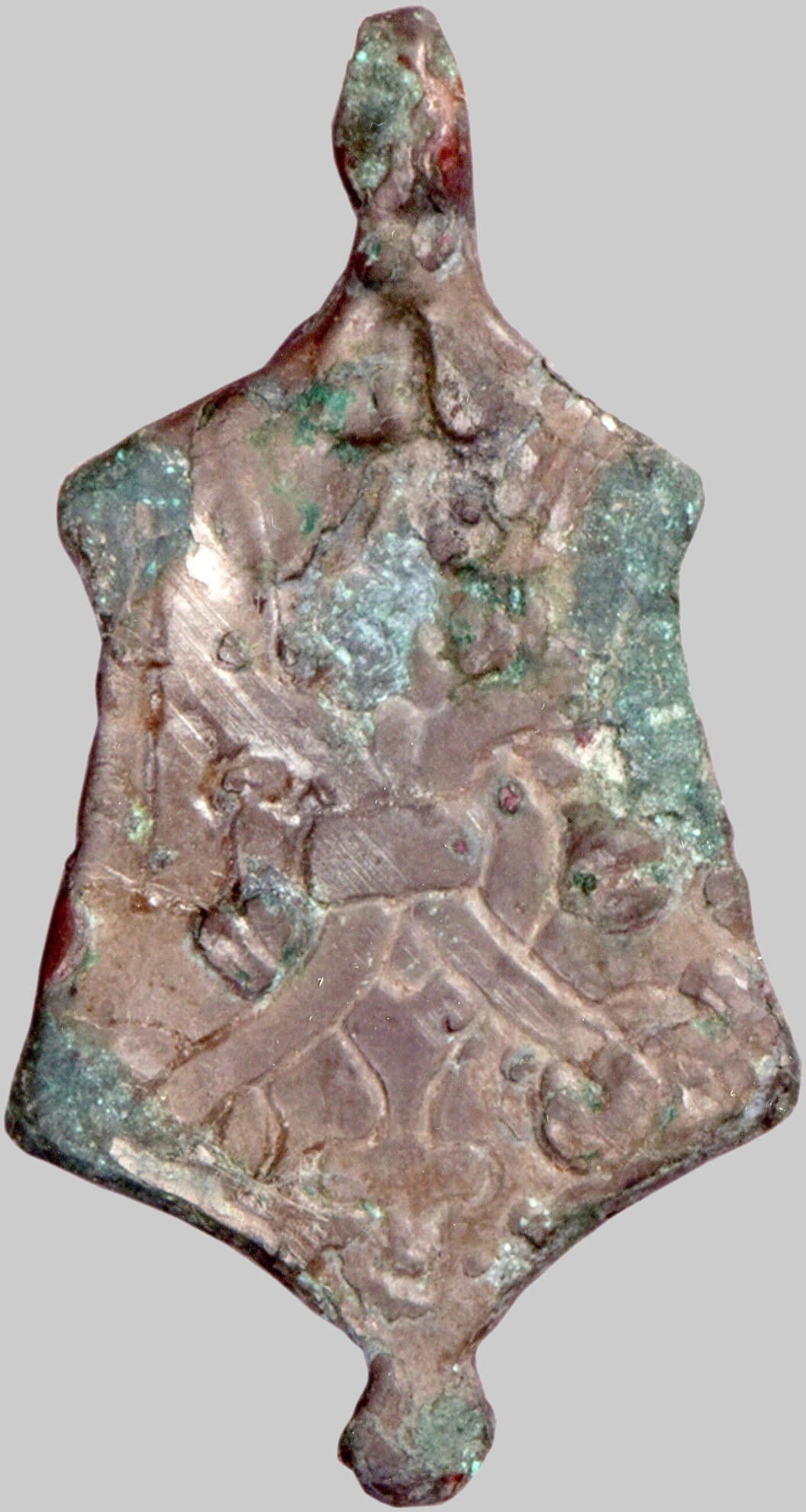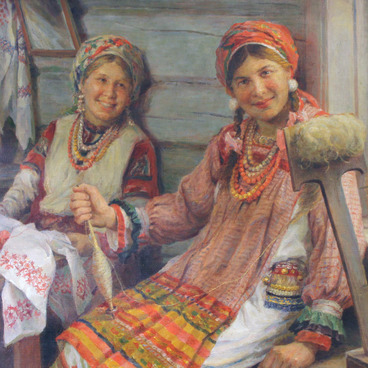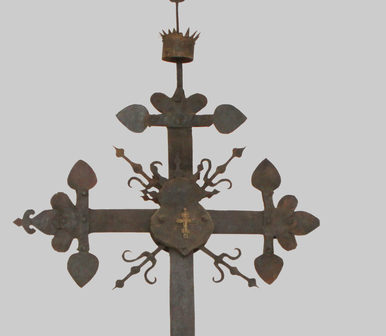The pendant with the Symbol of Rurik was found on the territory of Kelgininsky burial ground in Zubovo-Polyansky District in the Republic of Mordovia in 2000.The pendant was given to the funds of the Museum of Local History of Mordovia by Victor Ivanovich Vihlyaev, a professor and Doctor of Historical Sciences.
Ancient Russian heraldic pendant with the symbol of Rurik is a cast metal plate of a trapezoidal shape with a tab on top and a drop-shaped sprout at the bottom. Tridents which intertwine and form a floral ornament are depicted on both sides of the pendant.
Rurik’s family symbols were used by ancient Russian princes to mark proprietary rights on different objects. Family symbols were depicted in seals, coins and stamps but unlike heraldic coats of arms, they were not patrimonial but individual ones, that means that each prince owned his own symbol.
Officials, who represented the interests and acted on prince’s behalf, had pendants with family symbols. Prince’s personal symbols were widely spread on all the territory of Ancient Russia till the 13th century when they almost completely fell into disuse, giving way to family symbols. Princely coat of arms was carried by his warriors and tiuns (superintendents of prince’s affairs), important documents were approved with the seals with family symbols, craftsmen stamped seals with prince’s coat of arms on their products, coins were stamped with prince’s symbol.
Scientists believe that one of the reasons why individual symbols fell into disuse was simplification of the emblem. It was more and more difficult to create new images that’s why family symbols replaced individual ones.
The objects with Rurik’s family symbols in the form of bident and trident are often met. They were found during the excavations in Veliky Novgorod, near Zhovnino village in Ukraine, in Taman, at the bottom of Tsimlyansk Reservoir and in many other places. Archaeologists find bone, wooden and metal products with Rurik’s symbols, counting tags and amphoras with bidents and tridents.
Most likely, the represented pendant belonged to a person who acted in the name of prince Vysheslav - the eldest son of Vladimir I. Vysheslav was the prince of Novgorod from the end of 980s till 1010.The conclusion about the belonging of the pendant to Vysheslav can be made from the fact that tridents of younger representatives of Vladimir’s family differed from their father’s in a form of the top of the central dent. The trident depicted in the pendant is extremely close to the sign of Saint Vladimir but differs in the form of a stem, triangular part of which is crowned with a cross.
Ancient Russian heraldic pendant with the symbol of Rurik is a cast metal plate of a trapezoidal shape with a tab on top and a drop-shaped sprout at the bottom. Tridents which intertwine and form a floral ornament are depicted on both sides of the pendant.
Rurik’s family symbols were used by ancient Russian princes to mark proprietary rights on different objects. Family symbols were depicted in seals, coins and stamps but unlike heraldic coats of arms, they were not patrimonial but individual ones, that means that each prince owned his own symbol.
Officials, who represented the interests and acted on prince’s behalf, had pendants with family symbols. Prince’s personal symbols were widely spread on all the territory of Ancient Russia till the 13th century when they almost completely fell into disuse, giving way to family symbols. Princely coat of arms was carried by his warriors and tiuns (superintendents of prince’s affairs), important documents were approved with the seals with family symbols, craftsmen stamped seals with prince’s coat of arms on their products, coins were stamped with prince’s symbol.
Scientists believe that one of the reasons why individual symbols fell into disuse was simplification of the emblem. It was more and more difficult to create new images that’s why family symbols replaced individual ones.
The objects with Rurik’s family symbols in the form of bident and trident are often met. They were found during the excavations in Veliky Novgorod, near Zhovnino village in Ukraine, in Taman, at the bottom of Tsimlyansk Reservoir and in many other places. Archaeologists find bone, wooden and metal products with Rurik’s symbols, counting tags and amphoras with bidents and tridents.
Most likely, the represented pendant belonged to a person who acted in the name of prince Vysheslav - the eldest son of Vladimir I. Vysheslav was the prince of Novgorod from the end of 980s till 1010.The conclusion about the belonging of the pendant to Vysheslav can be made from the fact that tridents of younger representatives of Vladimir’s family differed from their father’s in a form of the top of the central dent. The trident depicted in the pendant is extremely close to the sign of Saint Vladimir but differs in the form of a stem, triangular part of which is crowned with a cross.



